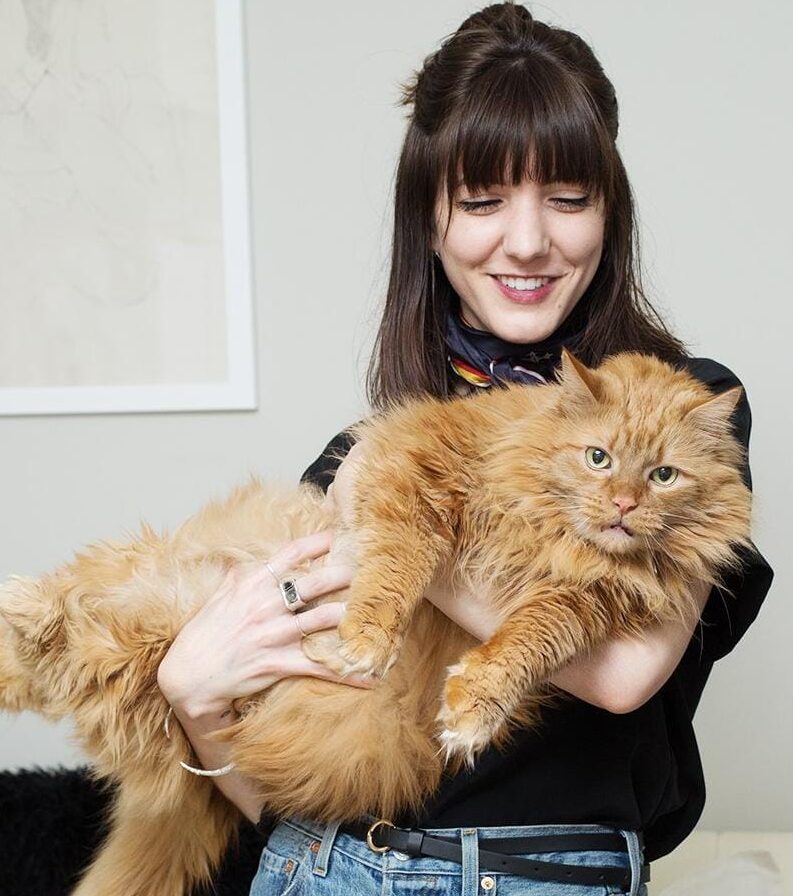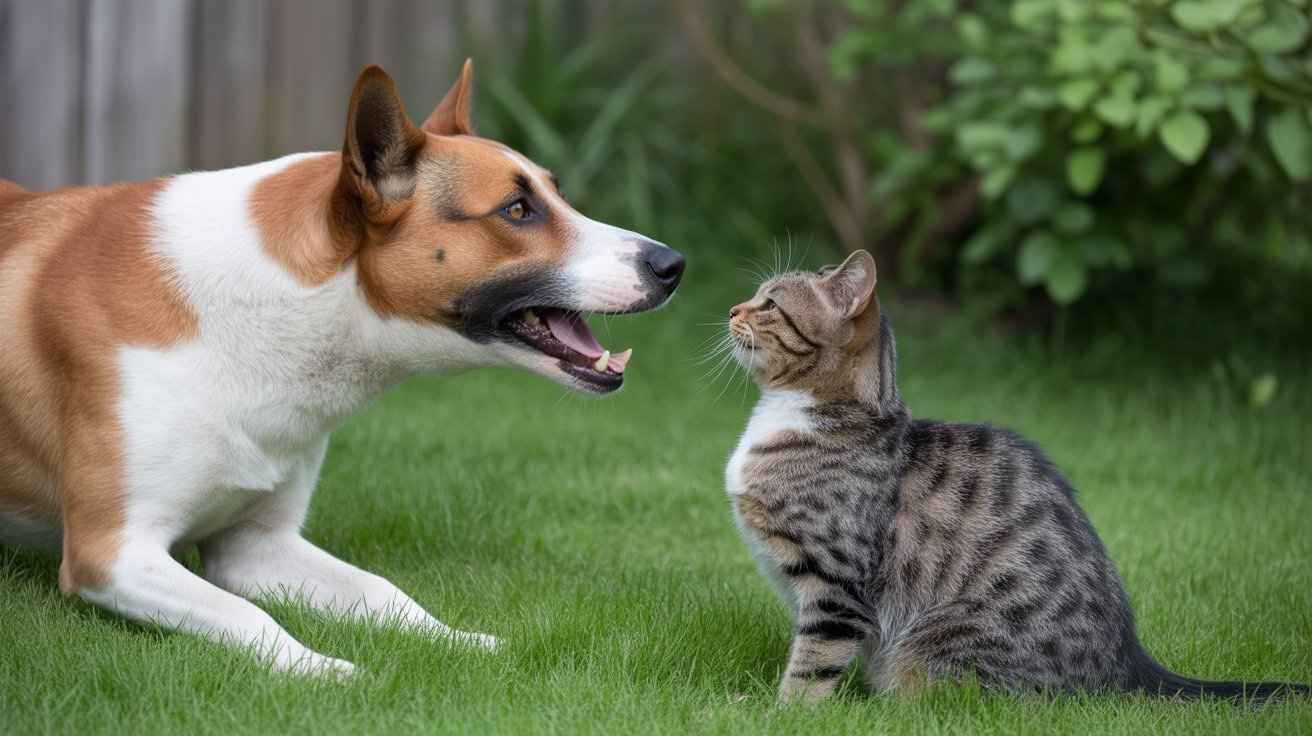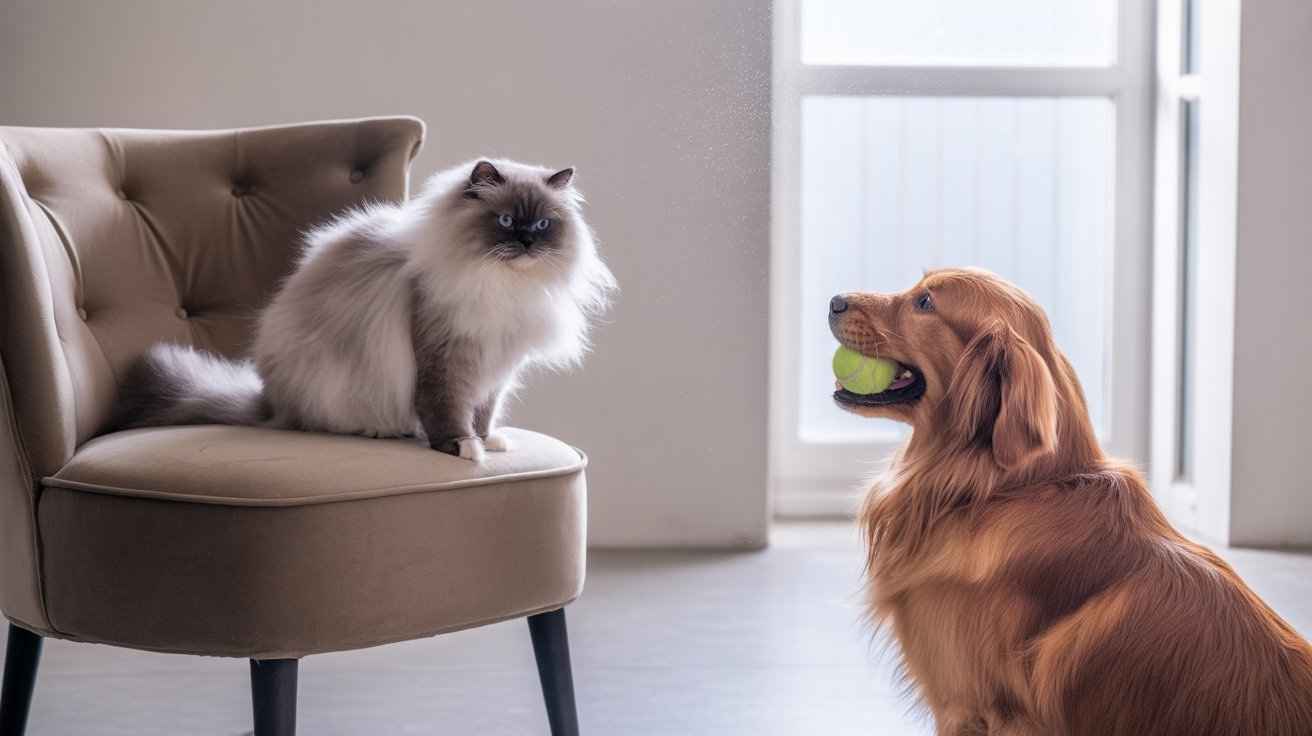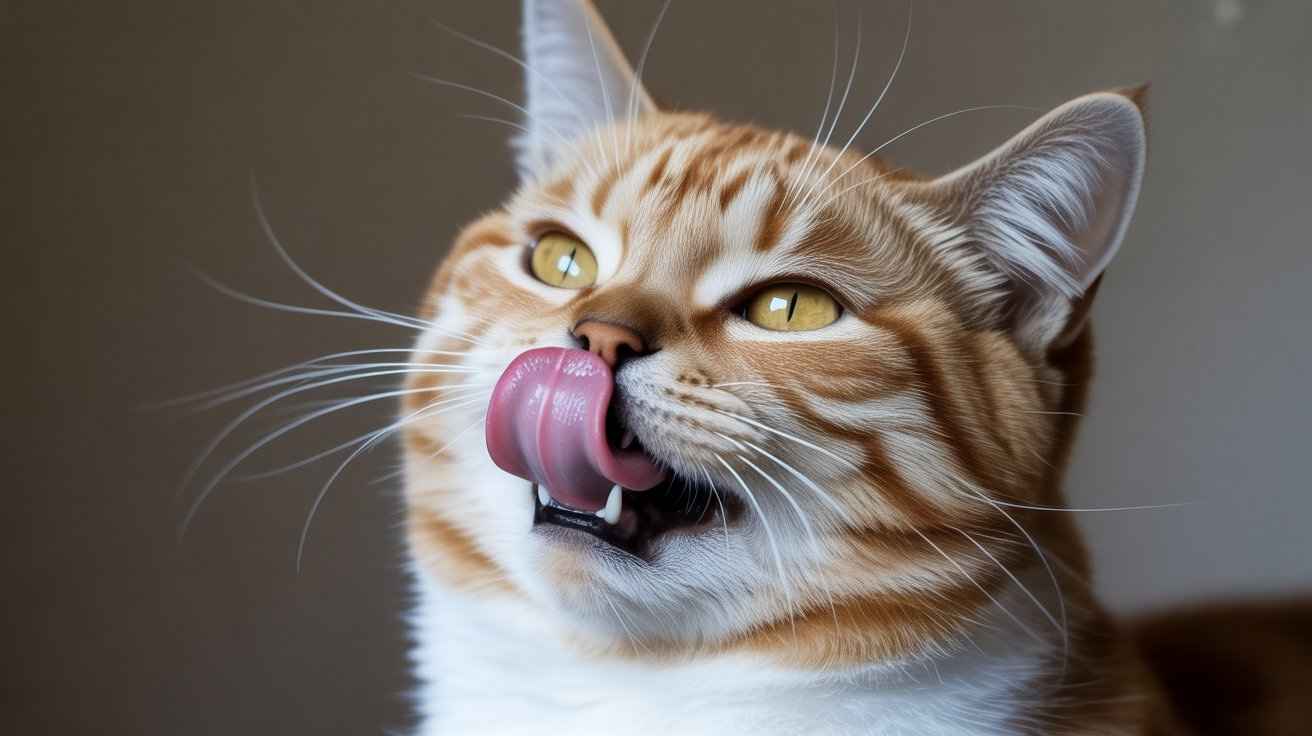Why Does My Dog Attack Cats? There are 5 reasons, including fear, prey drive, lack of training, territorial behavior, poor socialization, and anxiety.
Why does my dog attack cats?
Many pet owners ask, “Why does my dog attack cats?“ It can be stressful when your pets do not get along, but you are not alone. Dogs and cats live together in millions of homes, yet conflicts still happen.
Some dogs have a strong prey drive, which makes them chase anything that moves. Others may attack out of fear, guarding their territory, or due to a lack of socialization.
Sometimes it is not real aggression but rough play that becomes dangerous for the cat. By asking “Why does my dog attack cats?” You are already starting to understand the problem.
In this guide, you will learn the leading causes, warning signs, safety tips, and training methods that can help your dog and cat live together in peace.
Why Does My Dog Attack Cats? 5 Reasons + Solutions
| Reason | Solution |
|---|---|
| 1. Chasing instinct (Prey drive) | Give your dog plenty of exercise and practice recall commands. Reward calm behavior when near cats. |
| 2. Fear | Introduce pets slowly, use safe barriers, and reward calm reactions to cats. |
| 3. Territory | Give each pet their own space, food, and toys. Avoid forcing interactions. |
| 4. Play gone wrong | Supervise play, keep sessions short, and redirect rough play with toys. |
| 5. Frustration or anger | Give each pet its own space, food, and toys. Avoid forcing interactions. |
Common Reasons Dogs Attack or Chase Cats
You may ask, “Why does my dog attack cats?” Dogs have different reasons:
- Chasing instinct (prey drive): Many dogs have a natural inclination to chase moving objects, and cats are known for their speed.
- Fear: If a dog feels scared of a cat, it may bark or snap.
- Territory: Dogs sometimes protect their home or food.
- Play: Some dogs only want to play, but the cat may not like it.
- Frustration: If a dog is upset by something else, it may take it out on the cat.
Knowing these reasons helps you keep both pets safe.
Signs Your Dog May Attack a Cat
It can be hard to know, “Why does my dog attack cats?”, but there are signs.
- Staring hard at the cat without blinking.
- Stiff body like ready to jump.
- Growling or barking in a low voice.
- Hair standing up on the back.
- Chasing fast and not listening when called.
Cats also show signs. A cat may hiss, hide, or puff up its tail. These signals mean danger. If you see them, stop the pets right away. Learning the signs keeps both your dog and cat safe and calm.

Safety Steps If Your Dog Attacks a Cat
If you think, “Why does my dog attack cats?”, you also need to know what to do.
- Stay calm. Do not scream or hit.
- Make a loud noise. Clap your hands or bang something to distract.
- Use a barrier. Put a chair, blanket, or door between them.
- Do not grab with your hands. You could get hurt.
- Check the cat. If the cat is hurt, call a vet.
- Separate them. Give both pets a safe space to cool down.
These steps help keep everyone safe.
Training & Management Steps

You may wonder, “Why does my dog attack cats?” Training can help.
- Teach basic commands. Practice “sit,” “stay,” and “leave it.”
- Keep on leash. Use a leash when the dog is near the cat.
- Reward calm. Give treats when your dog is quiet around the cat.
- Start far away. Let your dog see the cat from a safe distance.
- Short meetings. Keep early visits short and safe.
- Exercise. A tired dog chases less.
Training takes time, but it makes dogs and cats safer and happier.
Living Peacefully in Multi-Pet Homes
Many families ask, “Why does my dog attack cats?” The goal is to help them live in peace.
- Give each pet space. Cats need high places; dogs need their own bed.
- Separate food. Feed them in different spots.
- Slow introductions. Let them meet little by little.
- Safe escape. Cats should have a safe place to run if they get scared.
- Equal love. Spend time with both so no one feels left out.
With patience, dogs and cats can learn to share a home without fights.

FAQs
Q1. Why does my dog attack cats?
Dogs may see cats as prey, feel scared, or want to protect their space.
Q2. Can dogs and cats be friends?
Yes. With training and patience, many dogs and cats live happily together.
Q3. Is my dog mean if he chases cats?
No. It is natural, but you must teach him not to.
Q4. How do I stop my dog from attacking?
Train commands, use a leash, reward calm, and keep both pets safe.
Q5. Should I call a vet or trainer?
Yes, if attacks happen often or seem very dangerous.

Hi, I’m Sana Sajid!I’m the voice behind CatsCare.blog, sharing my 10+ years of hands-on cat care experience. With a diploma in animal care, I offer practical tips, trusted advice, and easy-to-follow guides to help keep your cats healthy and happy.
When I’m not writing, I spend time with my own cats or exploring the latest developments in feline health. Follow CatsCare.blog for expert insights and real cat stories!





![A fluffy silver tabby cat with long fur is sprawled out and relaxing on a light-colored sofa, looking towards the camera. [Why Are Cats So Lazy?]](https://catscare.blog/wp-content/uploads/2025/09/why-are-cats-so-lazy.jpg)